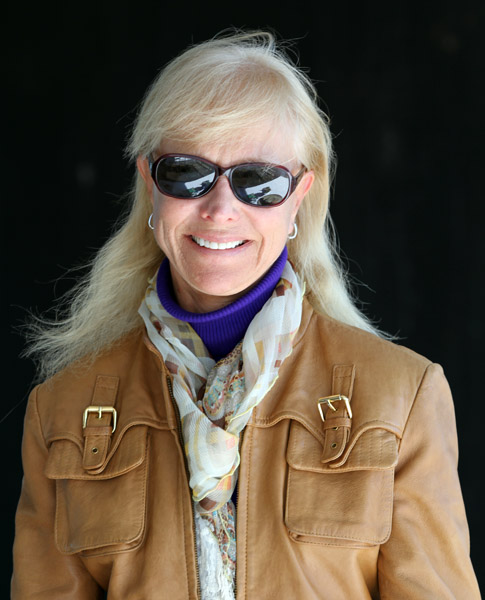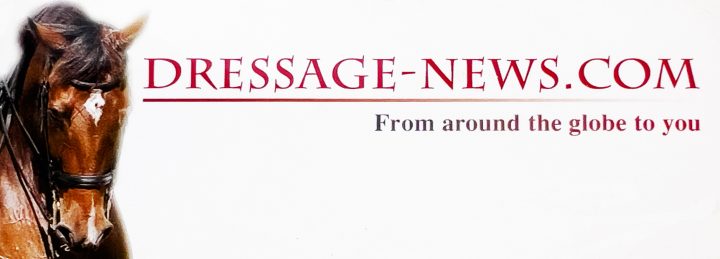Anne Gribbons’ Legacy–Pipeline for future of American dressage, and More-Part 2 of 2
12 years ago StraightArrow Comments Off on Anne Gribbons’ Legacy–Pipeline for future of American dressage, and More-Part 2 of 2

By KENNETH J. BRADDICK
Anne Gribbons rates as one of the biggest accomplishents of her three years as the United States national coach the creation of a pipeline to develop dressage from children to high performance.
When Anne took the job near the end of 2009, there was one U.S. Equestrian Federation national level coach in addition to herself–Scott Hassler of Chespaeake City, Maryland, responsible for the young horse program as he had been for several years.
When she left the post, there was a lineup responsible for all aspects of dressage–in addition to Scott and the Technical Advisor/Chef d’Equipe to be selected in the new few months as her successor, there is Jeremy Steinberg of Kirkland, Washington as youth coach and Debbie McDonald of Hailey, Idaho as developing coach.
“I had one great ambition,” she told dressage-news.com in an interview after the announcement of a committee to select her successor, “to put together a pipeline of education, a system for America. The goal was develoment of horses, training of horses and riders, an opportunity to do something for America that the nation did not have.
“We succeeded. We worked closely with all of the coaches and with the U.S. Dressge Federation. That used to be a rivalry but working with George Williams (president of the USDF and former chairman of the USEF Dressage High Performance Committee) we have started a new system for America.
“The whole thing has thrilled me. The harmony and atmosphere has improved tremendously. This is the way we have to go.
“The pipeline is in place. The players can change but the basic system is there and that is very important.”
In the three years she held the job, the teams for global championships–World Equestrian Games and Olympics–came from the same small group of horses and riders, with combinations reaching peak and maintaining that elite level for a few years, as is typical. Of the four combinations on the U.S. team at the 2010 WEG, Ravel ridden by Steffen Peters, Otto ridden by Todd Flettrich and Nartan ridden by Katherine Bateson-Chandler are retired. Only Calecto V ridden by Tina Konyot that was also on the U.S. team at the Olympics last summer still actively competes.
“We are in a recovery period,” Anne said as the U.S. high performance programs are being revamped. New horses will be needed for the next championships, the World Games in Normandy, France Aug. 24-Sept. 7, 2014.

Among hopes she named are Heather Blitz and Paragon, the Pan American Games team gold and individual silver medals in 2011 and team reserve at the London Games, and Lisa Wilcox and Pikko del Cerro HU, that add an extra level of excitement as both horses are American-bred and owned.
Plus, Katherine Bateson-Chandler and Alcazar working with British star Carl Hester who reflects what Anne said she hopes will happen with more riders, developing younger horses to the top levels.
“We have to make them here even if we do not breed them here,” she said.
“Our riders need more exposure to Europe, but only after they have done their homework here, otherwise it can be expensive and discouraging.
“For us in America we have fewer horses, longer distances to fewer shows available except in Florida. But we need to be in the ring riding those tests over and over until they become second nature or you get ring rusty. It should not be an event to go into the competition ring.”
Riders aiming for team competition need to ride the tests and “need to accept the criticism and need to take it to heart and do it again and again. Some of our riders want the help but don’t want the criticism.
“What judges say is not negative, but is saying, ‘You can do this better.’ No horse is perfect, otherwise every horse would get 100 per cent.
“We need to give the same information from the judges’ booths here as they get in Europe… no rose-colored glasses, but to help them get sharper before they even leave.”
Anne is one of only four Americans at the top of the International Equestrian Federation (FEI) rating of 5* judges–the others are Linda Zang of Davidsonville, Maryland, Axel Steiner of San Marcos, California and Gary Rockwell of Palm City, Florida–and is completing her last year as a member of the FEI Dressage Committee. She is in demand as a judge around the world, heading to Australia within days of this interview.
“I have enjoyed communicating with the high performance riders,” she said.
“Now, I’m enjoying being back in the judge’s booth and seeing them develop from another perspective.”
She will, however, continue working with Debbie McDonald in the developing program.
“I’m happy to make myself available to the United States team if they want a judge’s opinion,” she said.
“I am passionate about American dressage and I understand as a competitor what the riders are going through. I know their fears, their sweat and tears.
“I’m pretty happy in the place I am. Being the coach was a really good experience. Never for a moment was I sorry I did it. There were some tense and difficult times. Looking back I would do it all over again.”

